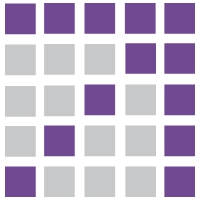Frequently Asked Questions
What is the coaching philosophy that guides your work?
The coaching mission is to Inspire Learning – Teachers coach students, instructional coaches coach teachers, but who coaches the coaches?
The Instructional Coaching Network is designed to inspire continuous learning and coaching for instructional coaches so that they can support and inspire learning for teachers and in turn for students.
The philosophy is one that combines all of the coaching models and educates coaches on each and helps coaches determine which is best for the situation they are positioned and for the teachers they are serving. We take an approach of “chameleon coach” which means we must have knowledge of coaching models, strategies and tools to be able to be flexible (and changeable) enough to use the right one at the right time.
Training and professional development within the Network pulls from various models including Jim Knight and his Partnership Principles, Costa with Cognitive Coaching, Diane Sweeney with Student-Centered coaching, Lucy West with Content-Focused coaching and Learning Forward’s work with all contributors, including JoEllen Killion. We also include the work of Elena Aguilar and her view on Transformational Coaching.
The Instructional Coaching Network has 4 focus areas:
Coaches must be experts in…
1. Conversation
2. Instruction
3. Simplification – streamlining information and implementation with clarity as much as possible
4. Execution – taking action!
We want coaches to be knowledgeable on all up to date research and information to make the best coaching decisions that have the most impact on teachers and ultimately students.
What will the 2 hour monthly sessions look like and how are they structured? Do you solicit input from the participants to build the PD?
The structure is the same each month in every city which we run our networks. The agenda is set with 4 main areas and the topics & content are based on participant feedback, input and needs. During one of the sections of the agenda, the participants decide what their immediate needs are on the spot and collaborate to meet those needs immediately – this is the “pick your peeps” section of the session.
The 4 agenda items are as follows:
- Reflection – we begin with an opening question that connects the work and conversation from the last month’s session.
- Solution – we work through an exercise/protocol that creates solutions for our recent struggles. These exercises and protocols not only help us have meaningful conversations to improve our work, but they can be used back at our schools during professional development sessions to help us generate rich conversations with our staff.
- Collaboration – each session has this section called ‘pick your peeps’ in which members can choose which group they want to have conversation and what topics need to be discussed. The discussions are focused on elementary level, secondary, math, literacy, technology and data teams most often.
- Action – we close the session with an action item we will act on during the next month based on our new learning.
The agenda is structured, yet very flexible with the learning and meeting needs of participants and targeting new learning. We take verbal and written feedback throughout the year, as well.
Could you handle the numbers if I sent math coaches, literacy coaches and TSTs (tech coaches)?
Yes, we have plenty of space for all in our networks. We also have much small group conversation, so that no matter how large the overall group is, there are groups within the group. We also jigsaw our work during the sessions, so that members get to interact with various people throughout each session. Our sessions are strategically facilitated so everyone feels involved and receives customized attention!
